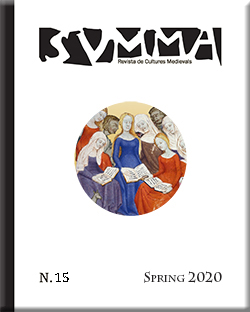Monasteries and Convents in Medieval Portugal: Spiritual Life and Establishment Logic
DOI:
https://doi.org/10.1344/Svmma2020.15.3Keywords:
Religious orders, Monasteries, Convents, Religious Reform, ObservantsAbstract
This text analyses the spatial distribution of religious orders and movements in the Portuguese territory from the last decades of the eleventh century to the first decades of the sixteenth century, as well as the different forms of spirituality that resulted from them. First established in rural areas of the northwest and soon following the southward advance of Christian armies, Benedictines and Cluniacs, and later Cistercians, Regular Canons of Saint Augustine and Military Orders, not only spiritually supported monarchy, nobility and common people, but also helped to conquer, populate and develop the burgeoning kingdom. From the beginning of the thirteenth century onwards, Mendicants and other orders such as the Hermits of Saint Paul would respond to the wishes of the laity living in a richer but also more unequal urban world, a laity that kept promoting more radical religious experiences. After almost a century of stagnation, foundations strongly resumed in the late fourteenth century, expanding over the entire kingdom and the Atlantic islands that were being discovered at the time due to both the movement of reform that took over the old orders and the emergence of new ones, such as the Canons of St. John the Evangelist.Downloads
Published
2020-06-29
Issue
Section
Articles
License
Copyright (c) 2020 SVMMA. Revista de Cultures Medievals

This work is licensed under a Creative Commons Attribution-NonCommercial-NoDerivatives 4.0 International License.
The authors retain rights and grant the journal right of first publication of the work.
The author (s) to retain the publishing rights without restrictions, only recognition of first publication.
SVMMA Revista de Cultures Medievals is licensed under a Creative Commons Attribution-NonCommercial-ShareAlike 3.0 Spain License















